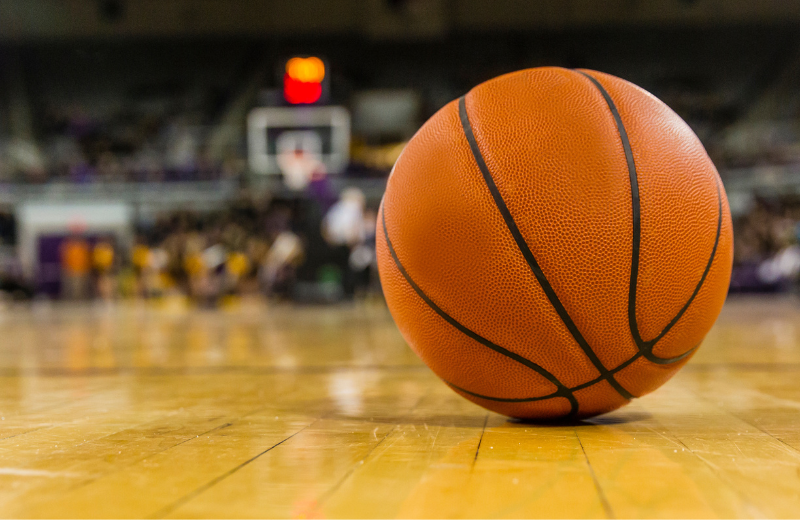
The on-field collapse of Buffalo Bills defensive player Damar Hamlin in January due to cardiac arrest sparked conversations about safety in the National Football League. As sports go, however, basketball players actually suffer the highest rate of sudden cardiac death (SCD).
SCD isn’t just a hazard for professional athletes — it’s the leading cause of exercise-related sudden death among young people. These rare but devastating deaths have complex causes, but there are steps that athletes, parents, schools, and sports organizations can take to limit the risk of cardiac arrest (the sudden loss of heart function) and help prevent SCD.
“Male basketball players are the most likely athletes to suffer sudden cardiac death,” says Sara Gould, MD, a sports medicine expert and physician in the UAB Department of Orthopaedic Surgery. She’s also served as medical director for numerous National Basketball Association events and team physician for the UAB Blazers women’s basketball team. “First of all, basketball requires sudden bursts of cardiovascular effort that may expose heart disorders. Also, the body type of athletes selected for basketball – tall with long limbs – seems to increase the likelihood for connective tissue disorders that can affect the heart.”
Between 2014 and 2016, according to research published in the Sports Health journal, there were 132 cases of cardiac arrest among middle school, high school, and college athletes. About 30% of these cases occurred during basketball, and 48% of the athletes survived sudden cardiac arrest. The research suggests that the survival rate could be improved significantly. Dr. Gould also points to research by her UAB Medicine colleague Irfan Asif, MD, which found that Black male college basketball players have a high risk of SCD, though the causes are debated.
Screening
Heart defects can be physical, electrical (having to do with rhythm), passed down through family genetics, or developed during life. This wide range of causes makes them difficult to screen for and predict. Still, it’s important to screen athletes as part of a physical exam, and this is required to play sports at most high schools and colleges. Some athletes will need further evaluation to be cleared for higher levels of competition and to play safely.
Dr. Gould recommends this 14-point cardiovascular screening checklist from the American Heart Association (AHA), which should be performed by a physician as part of an annual physical for young basketball players – whether their league requires it or not. The AHA checklist is divided into personal history, family history, and physical examination sections. According to the AHA, many physicians either aren’t aware of or don’t follow these screening guidelines. Dr. Gould and her colleagues rely on this screening tool to determine if an athlete needs to undergo tests such as an EKG, echocardiogram, or other more specialized testing.
If serious disorders are found, the athlete may not be able to safely play sports. On the other hand, doctors often can manage symptoms such as dizziness and rapid heart rate by ordering more salt and fluid intake and with increased monitoring.
Some young athletes who have a cardiac disorder show no warning signs or symptoms, Dr. Gould says. Still, it’s important to watch for possible cardiac-related signs – such as heart palpitations, dizziness and fainting, and chest pain – and seek immediate medical attention if they occur.
UAB Sports Medicine Cardiology Clinic
In May 2021, Dr. Gould partnered with Camden Hebson, MD, from the UAB Division of Pediatric Cardiology to launch the UAB Sports Medicine Cardiology Clinic, which focuses on young athletes and is one of only a few clinics of its kind. It provides diagnostic services, treatment, monitoring, nutrition planning, training recommendations, and other services that allow athletes to play their sport more safely. Evaluations can include EKGs, echocardiograms, and exercise stress tests.
“Once we determine cardiac limitations to exercise, our expertise is especially helpful in helping athletes establish parameters to return to play more safely after our evaluation,” Dr. Gould says.
Being Prepared
The presence of an automated external defibrillator (AED) – and someone trained to use it – can make the difference in surviving cardiac arrest on the court or playing field. This device analyzes the heart’s rhythm and can deliver an electric shock to restore normal rhythm. A 2018 study found that 89% of young people suffering cardiac arrest survived when an AED was used.
AEDs can be found at most colleges and high schools, but their locations vary, as do the standards for who must be on hand to use them. The AHA recommends that an AED be used within five minutes of a collapse, so a quick response is critical.
Dr. Gould says sudden cardiac death affects players at every level, from high school to professional play. In 2018, Zeke Upshaw, 26, a basketball player with the Grand Rapids Drive NBA G League team, died two days after collapsing on the court with sudden cardiac arrest. He’d collapsed during practice less than a year earlier and was diagnosed with hypertrophic cardiomyopathy (the thickening of the heart), but he was still cleared to play after an annual physical. Paramedics did not attempt to revive him until more than four minutes after his collapse, and although an AED was present, it was not used.
“Sudden cardiac death is often preventable, highlighting the need for readily available AEDs,” Dr. Gould says. “But it is also a rare and complex occurrence that requires preparation and vigilance for young athletes, their parents, coaches, and organizations.”
Click here to learn more about the UAB Sports Medicine Cardiology Clinic.
